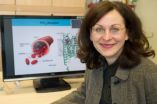(Press-News.org) Simple sequence repeats, abbreviated SSRs and frequently referred to as microsatellites, are highly variable sections of the genome. 'Sequence repeat' refers to the fact that a nucleotide motif is repeated. 'Simple,' because the repeated sequence often consists of only a couple of nucleotides—for example, ATAT.
Because these markers typically have high rates of molecular evolution, the number of repeats present in the genome often differs between individuals. By isolating SSRs and comparing length differences between taxa, evolutionary relationships can be inferred. Their high rate of change makes these markers particularly useful for fine-scale studies aimed at uncovering genetic structure within and between populations of a single species.
Scientists at Hendrix College have determined the location of a set of SSR regions that were originally found in the chloroplast genome of two species of pines. They compared these regions in over 100 pine species and tested them using over 900 individuals. The results of their study are available for free viewing in the May issue of Applications in Plant Sciences.
"We compared published primer pairs with newly published plastomes for many species to select highly variable, unique fragments" says Dr. Ann Willyard, one of the authors of the study. "Additionally, by adopting a PCR multiplex technique that does not require primers to be fluorescently labeled for each locus, this approach is much more cost-effective than traditional methods."
Importantly, all loci used in this study were from the plastid genome. "Nuclear markers have historically been difficult to work with in pines," explains Willyard. "Although the nuclear genome is important to fully understand evolutionary relationships in plants, nuclear data sets are very difficult to obtain for large numbers of individuals and are complicated by issues of paralogy and shared ancestral polymorphisms, especially in long-lived outcrossing tree species like pines."
Willyard and her undergraduate colleagues tested the utility of these SSRs within groups of ponderosa pine. They found six markers to be particularly useful for understanding genetic structure within this group. By showing which primers were in conserved regions of the genome, they were able to suggest that many of these loci are likely to be useful in other groups.
"The ponderosa pine species complex was used as a test case, but the resources that we have presented will make the technique easily adaptable to any group of pine species," explains Willyard.
The SSR regions identified in this study provide a jumping-off point for future studies. "We are particularly excited about the usefulness of these markers for delimiting species complexes," says Willyard. "Because next-generation sequencing is still cost prohibitive for population-level studies, fragment lengths of SSRs provide a quick and inexpensive way to look for patterns that are worth pursuing and testing with next-generation nucleotide sequences for one exemplar from each population of interest."
INFORMATION:
Austin M. Wofford, Kristin Finch, Adam Bigott, and Ann Willyard. 2014. A set of plastid loci for use in multiplex fragment length genotyping for intraspecific variation in Pinus (Pinaceae). Applications in Plant Sciences 2(5): 1400002. doi:10.3732/apps.1400002.
Applications in Plant Sciences (APPS) is a monthly, peer-reviewed, open access journal focusing on new tools, technologies, and protocols in all areas of the plant sciences. It is published by the Botanical Society of America, a nonprofit membership society with a mission to promote botany, the field of basic science dealing with the study and inquiry into the form, function, development, diversity, reproduction, evolution, and uses of plants and their interactions within the biosphere. APPS is available as part of BioOne's Open Access collection.
For further information, please contact the APPS staff at apps@botany.org.
Simple sequence repeats for population-level studies of pines
Study uses multiple plastid SSR markers and a PCR multiplex technique to efficiently genotype hundreds of Pinus individuals
2014-04-30
ELSE PRESS RELEASES FROM THIS DATE:
Regenerative medicine approach improves muscle strength, function in leg injuries
2014-04-30
PITTSBURGH, April 30, 2014 – Damaged leg muscles grew stronger and showed signs of regeneration in three out of five men whose old injuries were surgically implanted with extracellular matrix (ECM) derived from pig bladder, according to a new study conducted by researchers at the University of Pittsburgh School of Medicine and the McGowan Institute for Regenerative Medicine. Early findings from a human trial of the process and from animal studies were published today in Science Translational Medicine.
When a large volume of muscle is lost, typically due to trauma, the ...
Frozen meal eaters get more vegetables including greens, beans and whole grains but with lower total calories vs. fast food restaurant eaters
2014-04-30
SAN DIEGO (April 30, 2014) – New analysis of data from the 2003-2010 What We Eat In America (WWEIA) National Health and Nutrition Examination Survey (NHANES), a program of the Centers for Disease Control and Prevention (CDC), indicates that consumers of frozen meals (1) compared to consumers of quick service restaurant (QSR) meals (2) had lower calorie intakes and better Healthy Eating Index (HEI) score. In fact, the analysis revealed that those who consumed frozen meals consumed 253 fewer calories than those who consumed a quick service restaurant meal.
These results ...
Competition for ecological niches limits the formation of new species
2014-04-30
The rate at which new species evolve is limited by competition for ecological niches, report scientists from the University of Chicago in Nature on April 30. The study, which analyzes the evolutionary and genetic relationships between all 461 songbird species that live in the Himalayan mountains, suggests that as ecological niches within an environment are filled, the formation of new species slows or even stops.
To study what controls the process of speciation, Trevor Price, PhD, professor of ecology and evolution at the University of Chicago, Dhananjai Mohan of the ...
Initial research: Mango's effects on ulcerative colitis & bone parameters in animal models
2014-04-30
SAN DIEGO, CA – April 30, 2014 – Three new mango-related studies were presented this week at the 2014 Federation of American Societies for Experimental Biology (FASEB) in San Diego, revealing initial findings on the effects of mango consumption on ulcerative colitis and bone parameters in animal models.
"The mango industry's nutrition research program is committed to advancing our understanding of the role mangos can play as part of a healthy diet," said Megan McKenna, Director of Marketing for the National Mango Board. "These studies provide important insights that ...
Multiple consecutive days of tornado activity spawn worst events
2014-04-30
WEST LAFAYETTE, Ind. - Significant tornado outbreaks and especially strong tornadoes are more likely occur within periods of activity lasting three or more days, according to a Purdue University tornado expert.
Jeff Trapp, a professor of earth, atmospheric and planetary sciences, examined 30 years of U.S. weather records and found that an outbreak of 20 or more reported tornadoes had a 74 percent probability of occurring during a period of tornado activity lasting three or more days. During those same periods, a tornado rated 3 or higher on the Enhanced Fujita scale had ...
MS researchers find brain & cognitive reserve protect long-term against cognitive decline
2014-04-30
West Orange, NJ. April 30, 2014. Multiple sclerosis researchers have found that brain reserve and cognitive reserve confer a long-term protective effect against cognitive decline: Sumowski JF, Rocca MA, Leavitt VM, Dackovic J, Mesaros S, Drulovic J, Deluca J, Filippi M. Brain reserve and cognitive reserve protect against cognitive decline over 4.5 years in MS. Neurology. 2014 Apr 18. doi: 10.1212/WNL.0000000000000433 [Epub ahead of print]. James Sumowski, PhD, lead author of the article, and John DeLuca, PhD, are at Kessler Foundation. Co-authors are from the Manhattan ...
'US Should significantly reduce rate of incarceration,' says new report
2014-04-30
WASHINGTON -- Given the minimal impact of long prison sentences on crime prevention and the negative social consequences and burdensome financial costs of U.S. incarceration rates, which have more than quadrupled in the last four decades, the nation should revise current criminal justice policies to significantly reduce imprisonment rates, says a new report from the National Research Council.
A comprehensive review of data led the committee that wrote the report to conclude that the costs of the current rate of incarceration outweigh the benefits. The committee recommended ...
Seeing the bedrock through the trees
2014-04-30
University of California, Berkeley, geologist William Dietrich pioneered the application of airborne LIDAR – light detection and ranging – to map mountainous terrain, stripping away the vegetation to see the underlying ground surface.
But that didn't take him deep enough. He still couldn't see what was under the surface: the depth of the soil, the underlying weathered rock and the deep bedrock.
He and geology graduate student Daniella Rempe have now proposed a method to determine these underground details without drilling, potentially providing a more precise way to ...
Hope for better drugs to treat stroke and heart attacks
2014-04-30
An international team of researchers in cooperation with the University of Bonn has taken two "snapshots" of a receptor which are of critical importance for blood coagulation. The scientists now hope to be able to develop novel drugs using these results. These include tailor-made blood-thinning substances for heart attack and stroke patients whose effects are reversible and better controllable than those of current therapies. The researchers are presenting their results in the renowned journal "Nature."
After a cut to the finger, blood platelets come into play: they adhere ...
Should the EU ban on the import of seal products stand?
2014-04-30
Next month, following an appeal by Canada and Norway to overturn the EU ban on the import of seal products, the World Trade Organization (WTO) is expected to announce whether the 2013 decision will be upheld. In an editorial article, a University of Bristol academic, whose research on the animal welfare of the seal hunt has been used in the case, explains why the ban should stand.
The article by Dr Andy Butterworth, Senior Lecturer in Animal Sciences at the University of Bristol's School of Veterinary Sciences and an official observer of the seal hunt is published in ...
LAST 30 PRESS RELEASES:
Making lighter work of calculating fluid and heat flow
Normalizing blood sugar can halve heart attack risk
Lowering blood sugar cuts heart attack risk in people with prediabetes
Study links genetic variants to risk of blinding eye disease in premature infants
Non-opioid ‘pain sponge’ therapy halts cartilage degeneration and relieves chronic pain
AI can pick up cultural values by mimicking how kids learn
China’s ecological redlines offer fast track to 30 x 30 global conservation goal
Invisible indoor threats: emerging household contaminants and their growing risks to human health
Adding antibody treatment to chemo boosts outcomes for children with rare cancer
Germline pathogenic variants among women without a history of breast cancer
Tanning beds triple melanoma risk, potentially causing broad DNA damage
Unique bond identified as key to viral infection speed
Indoor tanning makes youthful skin much older on a genetic level
Mouse model sheds new light on the causes and potential solutions to human GI problems linked to muscular dystrophy
The Journal of Nuclear Medicine ahead-of-print tip sheet: December 12, 2025
Smarter tools for peering into the microscopic world
Applications open for funding to conduct research in the Kinsey Institute archives
Global measure underestimates the severity of food insecurity
Child survivors of critical illness are missing out on timely follow up care
Risk-based vs annual breast cancer screening / the WISDOM randomized clinical trial
University of Toronto launches Electric Vehicle Innovation Ontario to accelerate advanced EV technologies and build Canada’s innovation advantage
Early relapse predicts poor outcomes in aggressive blood cancer
American College of Lifestyle Medicine applauds two CMS models aligned with lifestyle medicine practice and reimbursement
Clinical trial finds cannabis use not a barrier to quitting nicotine vaping
Supplemental nutrition assistance program policies and food insecurity
Switching immune cells to “night mode” could limit damage after a heart attack, study suggests
URI-based Global RIghts Project report spotlights continued troubling trends in worldwide inhumane treatment
Neutrophils are less aggressive at night, explaining why nighttime heart attacks cause less damage than daytime events
Menopausal hormone therapy may not pose breast cancer risk for women with BRCA mutations
Mobile health tool may improve quality of life for adolescent and young adult breast cancer survivors
[Press-News.org] Simple sequence repeats for population-level studies of pinesStudy uses multiple plastid SSR markers and a PCR multiplex technique to efficiently genotype hundreds of Pinus individuals



